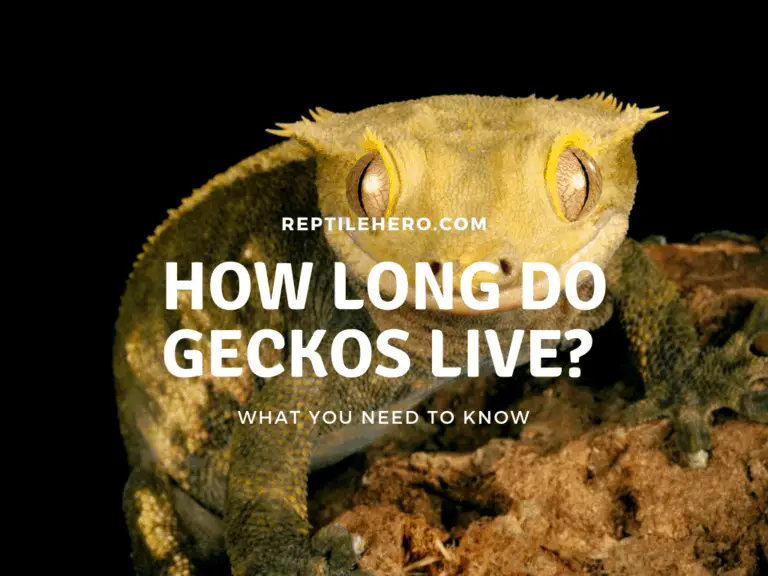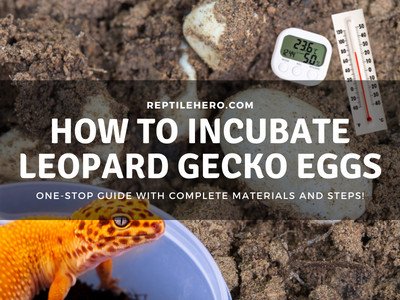Are Christmas Trees Dangerous to Reptiles? [10 Risks & 21 Trees]
It’s that time of the year again—Yuletide! But are our beloved snakes, geckos, turtles, and other scaly pets safe with Christmas trees in the house? Will they like all the twinkling lights and ornate decorations? Or will all of that just stress reptiles out?
Christmas trees can harm a reptile if they are placed inside the reptile tank or if the reptile is left playing with them unsupervised. Decorations, needles, resins, and small pests can indeed, harm the animal.
What even are Christmas trees? Is this a unique species of tree? The answer is no—different trees are used for yuletide celebrations. Read on to find out what the 21 coniferous trees commonly used during Christmas are!
Is It Safe to Have Christmas Trees and Reptiles Together?
As a general rule, supervised brief exposure to a Christmas tree will not affect a pet reptile’s overall health and well-being. That said, it is not recommended to place Christmas trees inside the enclosure for prolonged periods as it can still pose a risk of injury.
You’ve probably already come across numerous different social media posts, forum threads, and blog articles debating on whether or not Christmas trees are definitively toxic for reptiles.
On one side, some people say it’s completely safe under certain circumstances. The other side vehemently says that even the slightest exposure to Christmas trees will result in very lethal consequences.
Are Christmas Trees Toxic to Reptiles? Husbandry Fact or Folklore?
There is neither conclusive evidence nor detailed studies regarding the toxicity of every single type of Christmas tree and its adverse effects on reptiles.
Well, at least none that I’m currently aware of.
For the most part, this heated topic started with anecdotes from rat keepers sharing stories of how it caused skin irritation, respiratory problems, and the like [1]. Some also share studies on other bigger animals, of different species, in an attempt to prove their point.
There is very little research on herp (i.e., amphibians and reptiles) welfare and husbandry discussing the relationship between Christmas trees and reptiles.
We also have to factor in the fact that a lot of people also fall into the mistake of over generalizing the negative properties of one specific tree to a large and diverse group of trees simply because they are commonly used during the holiday season. (I will discuss this in greater detail later on in the article.)
My Take on Reptiles and Christmas Trees
Frankly, I do think that the dangers of Christmas trees to reptiles are mostly blown out of proportion. This is quite similar to the topic of “bad” and safe woods.
Don’t get me wrong though, I am in no way trying to villainize any keeper shying away from softwoods such as pine and fir which are traditionally used as Christmas trees.
I perfectly understand why some breeders and keepers choose to avoid having Christmas trees around their reptiles. They would just rather err on the side of caution than risk hurting their cold-bellied babies.
But I would like to stress the fact that experienced exotic veterinarians typically only raise concerns on the use of conifer byproducts such as dusty and raw cedar shavings [2]. Nevertheless, Christmas trees themselves are not completely harmless either.
10 Features of Christmas Trees That Pose a Risk for Reptiles
The following common features of Christmas trees could potentially harm your pet reptiles upon prolonged exposure in close proximity:
- Volatile compounds
- Sticky resin
- Extractive components
- Added preservatives
- Tree needles
- Unwanted pests
- Exposed wires
- Detachable ornaments
- Snow flocking
- Christmas lights
If you bought an artificial Christmas tree in favor of live or freshly cut ones, it doesn’t mean that your reptiles will be completely safe playing on it.
And yes—you read that right. Some people let their reptiles stay within the depths of their plastic Christmas tree as a form of enrichment. However, there are still dangers in doing so.
Moreover, real Christmas trees normally have a multitude of several defense mechanisms in their body—both chemical and mechanical [3, 4]. These have triggers like physical damage from insects.
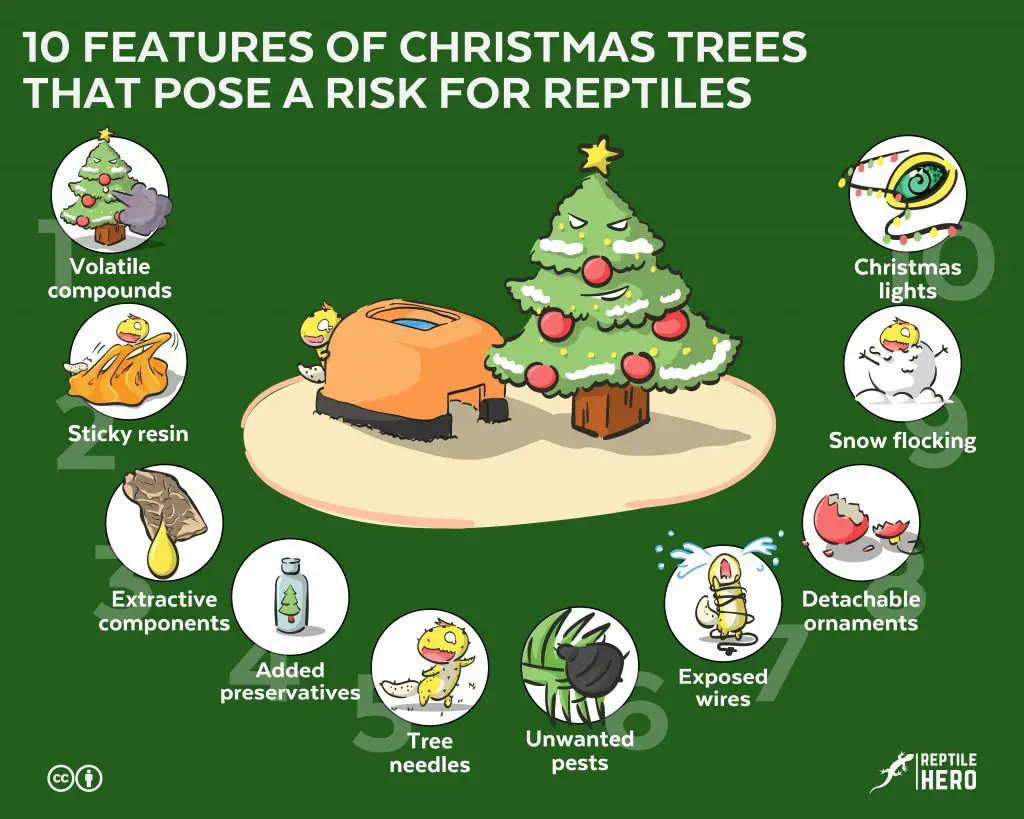
#1—Volatiles
Tanks should not have Christmas trees in them because volatiles in such trees, like terpene compounds, can produce air pollution building up rapidly in a closed and warm tank, especially dangerous for reptiles.
Live Christmas trees will naturally and constantly give off aromatic volatile organic compounds (VOCs)—or more simply, volatiles—into the air [4].
These are generally regarded as non-toxic. Moreover, these aromatic compounds are responsible for the characteristic scent associated with Christmas trees.
Below are some volatiles found in common Christmas trees:
- Camphene
- Pinene
- Taxadiene
- Camphor
- Phytane
- Cadrol
- Limonene
- Cedrene
- Hydrocarbons
In an enclosed space with substantially limited ventilation and warmer temperatures, Christmas trees will produce more volatiles. This will result in considerably lower air quality in your pet gecko or snake’s enclosure.
At high concentrations, these volatiles could cause irritation for reptiles that is similar to what we can experience with pesticide, varnish, paint, and turpentine.
The aromatic volatiles in Christmas trees has been linked to possible breathing and neurologic problems in reptiles but adverse effects have been more consolidated in humans and other animals [1, 2]. By and large, though, these results were found in studies concerning cedar shavings.
#2—Resin
Reptiles may inadvertently ingest resins produced by a Christmas tree while they are slithering, crawling, and climbing among the branches. Additionally, this sticky substance may get stuck on their bodies or obstruct their eyes, nose, and ears.
Christmas trees exude incredibly sticky resin. It is one of the most commonly induced defense mechanisms in conifer trees [5]. It has noxious and inhibiting properties.
Pitch, another term for resin, not only deters unwelcome guests and plug up tree wounds but also helps with either trapping intruders or washing away foreign materials. Such uninvited visitors include reptiles with long and sharp claws or teeth.
Resins are predominantly contained in the heartwood—the inner ring layers—of a Christmas tree [6]. But it can also be found in the secretory tissues of the needles, stems, and roots.
Although most people are familiar with resins as being a mess to deal with, it hardens with time. You may even see it beading up on the bark as well if it oozes out from the trunk and branches.
So if the pitch gets stuck in places it was never supposed to be in, like a gecko’s nose, I can only begin to imagine the pain it could experience. It may even get a very red and bloody snout from trying to get rid of hardened resin by itself.
#3—Extractives
Christmas trees have numerous natural chemicals like phenolics, believed to have significant harmful effects on reptiles. This belief is based on the fact that some phenolic—at very high doses—have resulted in comas and deaths of humans and non-reptile animals.
Another group of organic chemical compounds naturally found in trees is collectively referred to as extractives.
Similar to resins, extractives primarily accumulate in the heartwood of Christmas trees. These chemicals may also be obtained from the bark and—in lower concentrations—sapwood.
Basic groups of natural wood extractives that can be recovered from Christmas trees:
- Phenolics
- Fats
- Waxes
- Steroids
- Terpenoids
The Phenolic Problem in the Reptile Community
Among the hundreds of distinct compounds in these groups, those classified under phenolics get a really bad rap in the reptile-keeping community.
Indeed, I have read numerous studies and papers on the dangers of certain phenolics such as irritation, headaches, tremors, paralysis, coma, and even death [7, 8].
Phenolic compounds that have been proven toxic and dangerous include:
- Pinosylvin
- Cresol
- Alkyl phenols
- Bisphenol A (BPA)
- 2,4-dichlorophenol
- Pentachlorophenol
However, it seems that a large majority of keepers and breeders are unaware of the fact that phenolics also have numerous beneficial properties and functional roles—anesthetic, antiseptic, anti-oxidative, and anti-carcinogenic, to name a few.
Bonus Trivia: Phenolics are not only found in Christmas trees. In reality, these are in virtually any tree and plant you can think of. Furthermore, phenolics are readily available in our diets consisting of food items such as nuts, fruits, and teas!
#4—Preservatives
Preservatives added to Christmas trees to prolong their life have been shown to cause mild and severe gastric problems in small animals. Presumably, they can have the same effect on reptiles.
Commercial preservatives for Christmas trees ordinarily contain two things: fertilizers and dextrose (corn sugar). On their own, they aren’t necessarily poisonous. If it leaches into your Christmas tree’s water, it will most probably only have to endure a slight stomach ache [9].
But if left to sit as is, bacteria and fungi are likely to fester in this mixture. Once drank, your can expect your scaly baby to suffer from a serious case of gastroenteritis.
Some products also contain copper sulfate which is considered extremely damaging to the livers of small animals. To make matters worse, makers of the cheap bottled solutions we can easily buy aren’t transparent when it comes to the ingredients.
You’ve probably also seen a couple of recipes for homemade Christmas tree preservatives online. But those aren’t recommended either.
Do not add the following ingredients into the water for Christmas trees:
- Floral preservatives
- Bleach
- Lemon juice
- Aspirin
- Whiskey
- Vodka
- Sodas (or soft drinks)
Instead, experts advise reptile keepers and other pet parents to simply use plain and clean tap water to keep their Christmas trees fresh for a lot longer. This will diminish the chances of thirsty pets drinking highly toxic water to a great extent.
Aside from preservatives, Christmas trees that have been treated with fire repellent solutions and pesticides could also leach these substances into the water at the base of real Christmas trees.
#5—Needles
All Christmas tree needles—real and artificial—pose the risk of ingestion for reptiles. These can potentially result in impaction. Besides that, there are also rare cases of internal and external wounds due to sharp needle varieties in some animals.
Depending on the specific tree you have selected for Christmas, the needle leaves will vary greatly in terms of physical characteristics and other components (e.g., volatiles, resins, extractives, and preservatives).
Generally, however, you will find soft, flat, blunt, prickly, or sharp needles in potted and cut Christmas trees [10]. Some Christmas trees easily shed their needles leaves, whereas others retain them long after they are dead and dry [11].
Remember as well, that even the fake needles on artificial trees can be shed. I find that even the flexible plastic-type needles readily fall in heaps with a gentle shake of the tree.
They can do damage to soft-skinned reptiles that have fairly thin scales covering their bodies as well. Synthetic Christmas tree needles are made with pliable or stiff plastics and wires may be irregularly shaped and jagged. They could be sharp enough to cut through your reptile’s skin and scale.
In unusual incidents, I have also heard of pets having their digestive linings punctured by either real or synthetic Christmas tree needles after ingestion.
#6—Pests
On average, reptile caretakers can expect to find a variety of different insects and other small organisms within fresh Christmas trees. They can bring with them a multitude of unknown pathogens that could make reptiles ill.
Despite having free potential live insect feeders sounding like a great add-on when getting a Christmas tree, your precious reptile friend may get sick—or even die—from eating these pesky bugs.
There’s also a possibility that you’ll get an infestation after unwittingly selecting a pest-ridden tree from a plantation that doesn’t use pesticides—be it organic or not.
You might even be greeted by a venomous fork-tongued intruder hiding within the shadows of a real-life Christmas tree you brought in for the holidays!
It’s also greatly advisable to keep your windows and doors closed if you live in an area that’s home to a variety of snakes. Throughout the years, I have seen news of them sneaking into houses and seeking refuge in Christmas trees during winter.
#7—Wires
Artificial Christmas trees shouldn’t be placed in reptile enclosures because there is a great chance that they have exposed wiring within the trunk, branches, or needles. Bare and sharp wire can harm pet reptiles.
To be completely honest with you, I once tried to get one of those miniature one-foot-tall plastic Christmas trees to place inside my leopard gecko’s enclosure.
However, before I even had the chance to bring it anywhere near my leo, I cut my fingers because of a little hard-to-notice wire poking out of the “trunk” of the tree.
Despite not being a fun experience, I’m glad it happened because I wouldn’t have known about this risk otherwise. Unless, of course, I found my gecko bleeding in its vivarium. Boy, am I glad that didn’t happen!
Plus, there’s also a possibility of smaller reptiles getting stuck entirely or having their toes—or the tips of their tails—snagged by these Christmas tree wires.
Other than possibly injuring reptiles from contact, exposed wiring in fake Christmas trees will develop rust from regular tank misting and the relatively humid environment needed by most species.
#8—Ornaments
Most if not all commonly used Christmas tree ornaments may put reptiles in danger. They may cause lesions, impaction, and even strangulation.
Unless you have found a full-sized herp-safe Christmas tree that has all its ornaments permanently glued onto it—all the while still being easy to clean and move—I wouldn’t recommend you to let any of your pet reptiles play on it.
Listed below are some Christmas tree ornaments and the danger they pose for reptiles:
- Glass baubles—if shattered, it can cut through skin and scale
- Textile decors—toes and teeth may get caught
- Small plastic trinkets—present a choking hazard
- Tinsel—if ingested, can cause impaction
- Garland—could cause strangulation
- Potpourri—may cause choking and impaction
- Fake plants/berries—if mistaken for real food, could cause choking and impaction
Additionally, there may also be exposed wires and flocking on them.
So if you are dead set on getting a good holiday photo of your reptile for cards and calendars, just take it with the Christmas tree in the back for a festive feel.
Better yet, take a picture of your pet with a green screen behind it so you can just add whatever background you want!
#9—Flocking
Imitation or faux snow placed on Christmas trees, also known as flocking, may have adverse effects on reptiles that accidentally consume the material. This material is also said to lead to irritation upon contact with the skin and eyes or after inhalation.
Whether or not this was glued onto the needles or branches of a Christmas tree, there is a high likelihood that a significant amount will fall off.
Despite being largely made from water (approximately 99%), flocking products may also contain other chemicals such as methylene chloride [12].
Although this substance dissipates rather quickly from flocking, it can still present a problem in a closed space such as your reptile room.
In humans, inhalation, ingestion, and exposure to the high amount of flocking causes:
- Redness
- Dermatitis
- Irritation
- Coughing
- Headache
- Nausea
- Drowsiness
- Dizziness
- Fainting
- Palpitation
- Fever
- Seizures
For reptiles, I haven’t seen much evidence of fake snow powders and sprays being distinctively poisonous. But again, it’s perfectly okay to cautious in such cases.
If your reptile does accidentally eat some, make sure to keep it hydrated with fresh and clean water. From what I’ve seen so far, this helps expel it faster from the body and prevents negative reactions.
#10—Lights

Colorful and flashing lights traditionally adorned on Christmas trees are not safe for reptiles. They can confuse, disorient, and disturb reptiles especially if they are lit up throughout the night. In addition, these can entangle, burn, or even electrocute reptiles.
Are you thinking that it would be fine to place Christmas lights in my pet reptile’s tank? Well, I hate to be the one to break it to you but that is not recommended.
Even if it’s placed outside your pet reptile’s tank, I would still advise against Christmas lights. Basically, as long as your pet chameleon, skink—or what have you—can see it, Christmas tree lights are a problem.
Visual Problems Due to Christmas Tree Lights
Sure, Christmas tree lights are vibrant and fun to just watch. However, reptiles probably won’t share our enthusiasm for these.
Erratic Flashing: More often than not, Christmas lights are programmed to flash in a specific way.
This is incredibly different from the twinkling stars nocturnal reptiles species are familiar with. It is in no way similar to sunlight that crepuscular and diurnal reptiles need.
Unnatural Colors: No matter the colors of your Christmas lights, unless it is a bright and clear bluish-white or a warmer yellow-orange light, it will mess up your reptile’s color vision.
Multi-colored lights are even worse, washing their sight from red to blue, blue to green, and so on.
Your Pet Reptile Wonders: Is It Day or Night?
As much as possible, reptiles should be provided with about 12 hours of light and 12 hours of darkness—regardless of whether they are nocturnal, diurnal, or crepuscular.
Otherwise, their entire sleep-wake cycle will get disrupted, affecting pretty much all aspects of their lives.
So even if you only have cool or warm white Christmas lights, it’s best to turn those off after sundown as well.
Physical Dangers of Being Too Close to Christmas Tree Lights
Finally, letting your reptiles explore a fully decked-out Christmas tree with lights and everything is a recipe for disaster.
Long Strings: Their toes, teeth, and tails can get caught and entangled in the cords of Christmas lights. If worse comes to worst, they may also
Hot Bulbs: Despite being pretty small, some Christmas lights have bulbs that can get scalding hot after hours of operation.
Because they are small, and evenly distributed along the entire length of the cord, your reptile may mistakenly think that they are safely being warmed even though they are already getting thermal burns.
Electric Cords: In the unlikely event that your ever-curious reptile baby decides to chew on to claw through electrical cords, it may die instantly due to electrocution.
What Conifers are Considered Christmas Trees? (21 Types)
I have already briefly mentioned some specific types of conifers used as Christmas trees in the earlier parts of the article. But I have yet to give a more concise explanation of what constitutes a Christmas tree.
Essentially, Christmas trees are young evergreen conifer trees with conical shapes.
More specifically, conifer trees such as firs, pines, spruces, cypresses, and cedars are used and decorated for Christmas worldwide. Though they are available in several shapes, those with a distinct conical shape are favored and selected by most.
Below is the list of 21 conifers ordinarily used as live and freshly cut Christmas trees:
- Douglas fir (Pseudotsuga menziesii)
- Caucasian or Nordmann fir (Abies nordmanniana)
- Noble fir (Abies procera)
- Fraser fir (Abies fraseri)
- Spanish fir (Abies pinsapo)
- Balsam fir (Abies balsamea), needles with blunt, notched apex
- Concolor or White fir (Abies concolor), needles with sharp apices
- Grand fir (Abies grandis), needles with blunt, notched apex
- Scots or Scotch pine (Pinus sylvestris)
- Virginia pine (Pinus virginiana)
- Eastern white pine (Pinus strobus)
- Black Hills spruce (Picea glauca var. densata)
- Colorado blue spruce (Picea pungens)
- White spruce (Picea glauca)
- Norway spruce (Picea abies)
- Leyland cypress (x Cupressocyparis leylandii)
- Arizona cypress (Cupressus arizonica)
- Blue pyramid cypress (Cupressus arizonica var. glabra)
- Common juniper (Juniperus communis)
- Virginian juniper or eastern red cedar (Juniperus virginiana)—not a true cedar tree
- Deodar cedar (Cedrus deodara)
How Can You Keep Pet Reptiles Away From Christmas Trees?
The best way to keep pet reptiles away from the potential dangers of Christmas trees is to have them in separate rooms that can be closed off from each other. If this is not doable, consider doing the following:
- Fence it off. Block access to the Christmas tree during free roam sessions by surrounding the bottom half with a fencing material like this one from Amazon.
- Place it far. Don’t place your Christmas tree right in front of your reptile tanks so that your pets won’t take refuge in it in case they escape their enclosures.
- Limit exposure. Choose to stop free roams while your Christmas tree is still up and you have nowhere else to let your reptile explore for enrichment.
- Cover the water. Put a skirt (here on Amazon) around the base of your Christmas tree so that the water—with all the substances that might have leached into it—is out of reach to your reptiles.
- Settle for less. If you already have limited space at home, consider opting for other smaller and safer decorations that are designed in the shape of traditional Christmas trees like this one on Amazon.
Further Questions
Can I decorate the inside of my gecko and snake enclosures for Christmas?
Experienced keepers and breeders highly discourage placing any Christmas decorations inside reptile tanks. Though it is okay to swap out some tank furnishings and decors between seasons, having an enclosure filled with all sorts of strange and unnatural ornaments can easily distress your reptile to a substantial level.
Is it okay to use shavings from pine trees—and conifers, in general—as vivarium bedding or substrate for pet reptiles?
Not all conifer shavings are safe for added bedding or substrate material for most reptiles. Cedar and yew, for example, are regarded by experts as being particularly toxic for reptiles due to the high concentrations of potent compounds in them. Douglas fir seems to be the safest option among conifers.
Are pine cones, pine straw, and other pine tree byproducts safe for reptiles?
Products from pine and other conifer trees are generally regarded as unsafe for reptiles if fresh. This includes items such as pine cones, needles, branches, bark, and roots. However, kiln-dried products are most likely safe as potentially toxic compounds are removed in the process.
Do pine snakes normally eat pine cones?
No, pine snakes do not normally eat pine cones or any other conifer cone. The name of these snakes is not due to such a specialized diet. Pine snakes were given their common name due to their native habitat—in the sandhills of longleaf pine forests.
Takeaways
Pet reptiles and Christmas trees can safely be housed together in a single home. However, direct contact is allowing direct contact is highly discouraged due to possible risks.
Volatiles, resins, extractives, preservatives, needles, pests, wires, ornaments, flocking and lights on a Christmas tree can hurt your pet reptiles.
There are 21 conifer trees frequently used for Christmas celebrations across the world.
Ideally, reptiles should be kept in a room separate from the Christmas tree to avoid endangering them.
Sources
[2] https://www.msdvetmanual.com/all-other-pets/reptiles/providing-a-home-for-a-reptile
[3] https://onlinelibrary.wiley.com/doi/10.1111/j.1744-7909.2010.00910.x
[4] https://earthdata.nasa.gov/learn/sensing-our-planet/volatile-trees
[5] https://www.jstor.org/stable/2656626
[6] https://www.routledgehandbooks.com/doi/10.1201/b12487-5
[7] https://pubmed.ncbi.nlm.nih.gov/3324392/
[8] https://www.atsdr.cdc.gov/toxfaqs/tfacts115.pdf
[9] https://books.google.com/books?id=a36rGkkFo2IC&pg
[10] https://www.extension.iastate.edu/news/2005/nov/061401.htm
[11] https://www.worldatlas.com
[12] https://www.poison.org/articles/safe-use-of-artificial-snow-184

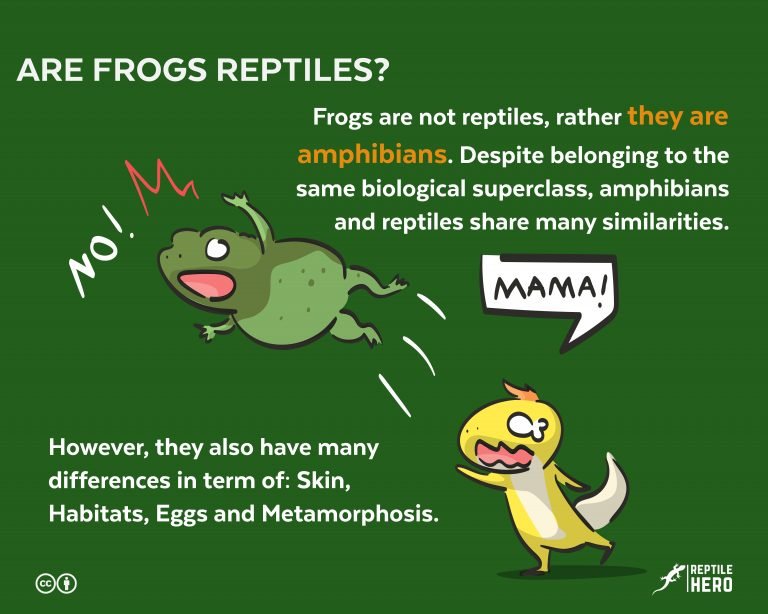
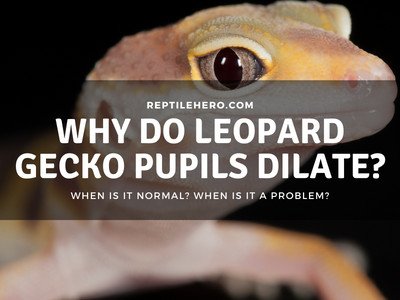
![5 Steps To Calm Down A Gecko [+4 Simple Tips]](https://www.reptilehero.com/wp-content/uploads/2021/12/calm-down-gecko-cc-768x614.jpg)
